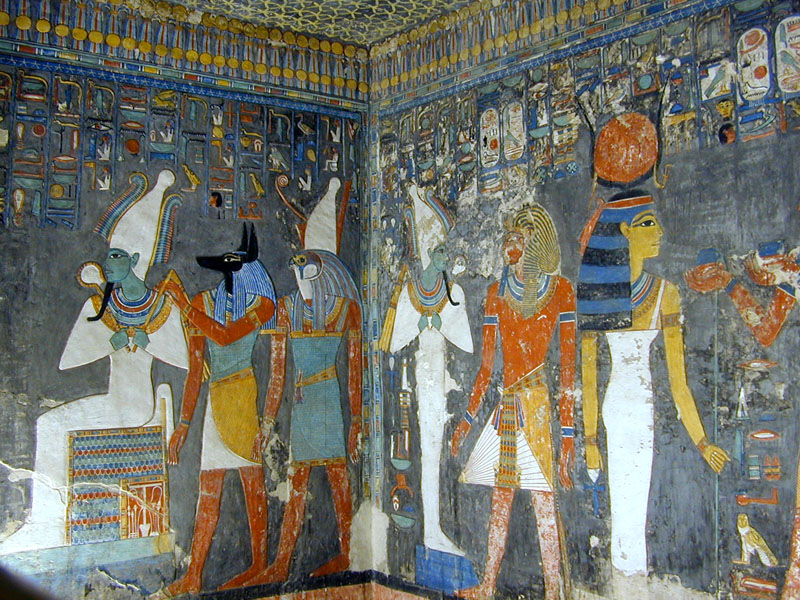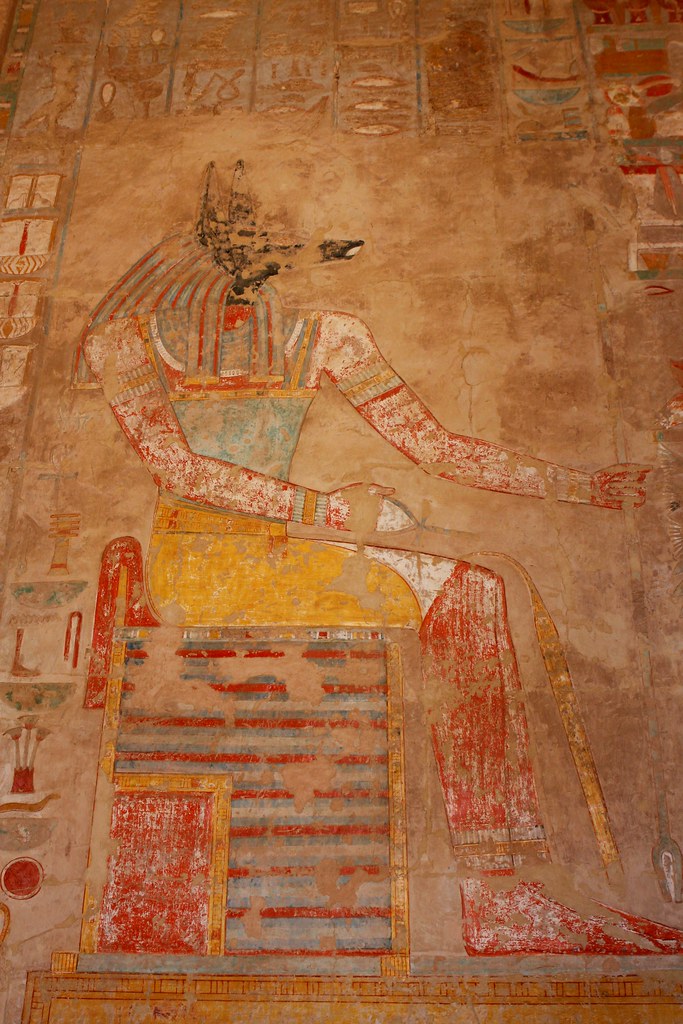"...and hail, Anubis in the tomb, great god, chief of the holy dwelling." - Book of the Dead
Anubis is the god in every movie involving anything Egyptian. He is perhaps one of the few Egyptian gods that he average person on the street might recognize. More important than his pop culture features, was his importance to the ancient Egyptians. No other god save Osiris was more important in regards to the funerary practices of the Egyptians. But where did the great funerary god come from? There are some differing myths related to his origin. In the coffin texts he is the son of Heset and also Bastet. Another text says he is the son of Re. My personal favorite is that Anubis is the son of Osiris. This ties in nicely with the belief that it was Anubis who mummified the murdered god’s body, and really takes the point home of just how important Anubis was in the funerary rites.
Another part of his origin may lie with the habit of desert canines scavenging the shallow graves often found in early Egypt. Egyptian magic often used the form of a threat to protect from the threat itself. It's conceivable that Anubis is a combination of the jackal and some form of canine, but there is no definitive evidence on the exact animal, if any, he is supposed to be.
Anubis really was key to a person's journey into and through the afterlife. He held multiple important titles such as "Foremost of Westerners". West was the direction of the setting sun, of the underworld. Most of the cemeteries were located on the western side of the Nile, and the deceased were known as Westerners.

Anubis Weighing Heart of Deceased |

Anubis Jackal Form |
The god also held the tile of “He who is in the place of embalming”, which not only referred to his role in the embalming process, but also meant he was the master of the ritual tent where embalming took place. Anubis’ role didn’t end with embalming; he also awakened the soul after death and led the soul to be judged before the gods. Anubis was also the god that weighed a person’s heart which determined if a person would go onto eternal life or be devoured, ending his existence (Wilkinson, 2017).
"...the offering that the king gives! the offering that Anubis gives! thousands of loaves, beer, oxen, geese, of all good things!"
Anubis also watched over the tombs of the dead. He held the title "Ruler of the Bows". These nine bows represent different enemies of the ancient Egyptians. An image of Anubis crouching over these nine bows is found on many of the seals protecting the tombs in the Valley of the Kings. His crouching over the bows showed his dominance over the enemies represented by the nine bows. These symbols represented not just the foreign enemies of the state, but also evildoers, violators of tombs as well as enemies of the dead in the underworld. When a sandstorm buried a tomb, it was seen as the god Anubis hiding and protecting the tomb from being looted (Wilkinson, 2017).
Another interesting aspect of Anubis is his appearance in birth scenes. In some of these scenes, the god is pictured bending over a large disc. He appears with his disc at the divine birth of Hatshepsut at Deir el-Bahri and at the mammisi of Nectanebo I at Dendara. Later on, Anubis' presence at birth houses would become standard during the Graeco-Roman period.
The question of why is Anubis, a god very much connected with the afterlife, present at birth scenes, and what is the mysterious disc he is bending over? The answer to these two questions is intertwined. At the Temple of Nectanebo I and Augustus, there is an inscription that links Anubis' disc with the moon. Anubis is recorded saying, "I have come before the lord of the gods to see the son whom he loves. I have formed his limbs in life and stability, they being rejuvenated like the moon in the month."
Now perhaps we have an answer to the mysterious disc. But what does the moon have to do with birth? Perhaps the moon is more than simply the moon. The stele of Ramesses IV, which is dedicated to Osiris states, "You are the moon in the sky; you rejuvenate yourself according to your desire and become old when you wish." Here we have a direct link of Osiris as the moon. It was also common for the body of Osiris to be substituted with the moon.
The moon being the body of Osiris is reinforced with the fact that Anubis is seen bending over the moon with his hands extended just as he is depicted in mummification scenes of Osiris. And here we have our potential explanation of Anubis' presence in birth scenes. He is the rejuvenator, he rejuvenates and resurrects Osiris, and Osiris as the moon continues his cycle of rebirth (Ritner, R. K. 1985).

Anubis as portrayed in the tomb of Horemheb |

The God Anubis in the Temple of Hatshepsut |
Anubis played a large role in Egyptian religion, life, death and the afterlife. His many roles from healer, embalmer and guide ensured widespread devotion.

